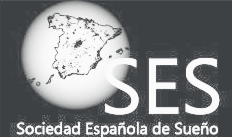Pupillometric findings in children with obstructive sleep apnea.
Philby MF, Aydinoz S, Gozal D, Kilic S, Bhattacharjee R, Bandla HP, Kheirandish-Gozal L. Sleep Med. 2015 Oct;16(10):1187-91.
BACKGROUND: Obstructive sleep apnea (OSA) leads to intermittent hypoxia, activation of the sympathetic nervous system, and eventually cardiovascular morbidity. Alterations in autonomic nervous system (ANS) tone and reflexes are likely to play major roles in OSA-associated morbidities, and have been identified in a subset of children with OSA.
OBJECTIVES: To evaluate whether pupillometry, a noninvasive and rapid bedside test for the assessment of autonomic nervous system dysfunction (ANS), would detect abnormal ANS function in children with OSA.
METHODS: Children ages 2-12 years underwent polysomnography (PSG), and were divided based on PSG findings into two groups; Habitual Snorers (HS; AHI < 1 h/TST, n = 17) and OSA (AHI > 1 h/TST, n = 49), the latter then sub-divided into AHI severity categories (>1 but <5, >5 but <10, and >10 h/TST). Pupillometric measurements were performed during the clinic visit in a dark room using an automated pupillometer device.
RESULTS: A total of 66 subjects with a mean age of 7.3 ± 2.6 years were recruited. There were no statistically significant differences between any of the groups, even when comparing severe OSA (n = 15) and HS in any of the measures related to pupillary reflexes. However, mild, yet significant increases in systolic blood pressure and morning plasma norepinephrine levels were detected in the severe OSA group.
CONCLUSION: Although ANS perturbations are clearly present in a proportion of children with OSA, particularly those with severe disease, pupillary responses do not appear to provide a sensitive method for the detection of ANS dysfunction in OSA children.
Ventana Científica. Diciembre 2015. Artículo 111
Pupillometric findings in children with obstructive sleep apnea.


